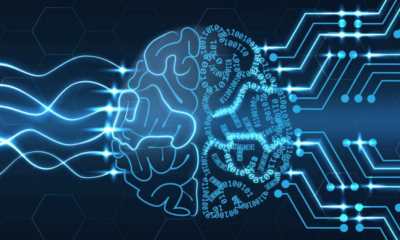The Motivator
Top 5 Machine Learning Algorithms for Beginners

The use of Machine Learning has grown exponentially over the last few years. The things we thought could only be done by an intellectual human are now being done by machines without human interference. Such is the power of Machine Learning.
Machine learning is a technology that allows machines to learn from data, identify patterns and make decisions without human intervention and trains a machine to learn from previous outcomes.
Machine learning models look for patterns in the data and try to draw conclusions as you or I would. Once the algorithm becomes good at drawing conclusions, it applies the knowledge to new datasets and keeps improving.
In a nutshell, Machine Learning is the method behind how machines learn from data.
Types of machine learning
There are majorly three types of machine learning-
- Supervised machine learning- In supervised learning, data scientists feed a large amount of labeled data to algorithms and define the variables they need the algorithm to assess for correlations. However, this type of learning requires a vast pool of data to master the tasks.
- Unsupervised machine learning- And unsupervised machine learning; the algorithm looks for patterns & data sets that don’t have labeled responses. You would use this technique when you want to explore your data but don’t have a specific goal. In this case, the algorithm scans through data sets and starts separating data into groups based on shared characteristics.
- Reinforcement Learning- Reinforcement learning is teaching a machine to complete a multi-step process with clearly defined rules. The algorithm takes its own decisions along the way & is built in a way that either it gets rewards or penalties on actions it takes.
Top 5 machine learning algorithms used by data scientistsNow, without any further ado, let us look at the top 5 machine learning algorithms used by data scientists.
1) Linear Regression- Linear Regression is a supervised machine learning algorithm. In machine learning, we have a set of input variables that are used to find an output variable. Linear Regression quantifies the relationship between an input variable and an output variable. Linear regression is generally used when working with exploratory variables and scalar.
2) Logistic Regression- Logistic Regression is used when the dependent variable is in binary form. Logistic regression is the best method for binary classification problems in statistics. In simple words, it is used to predict whether an event will occur or not.
For example, if we were to predict whether a student will pass or not, we would label pass students using the value of “1” in our data set.
3) KNN Algorithm- K- nearest neighbor (KNN) is a supervised machine learning algorithm used to solve regression and classification problems.
K-Nearest Neighbors algorithm (or KNN) is one of the most used learning algorithms because of its simplicity. KNN Algorithm works on the principle that every data point falling near to each other comes in the same class. The basic assumption here is that the things that are near to each other, are similar to each other.
4) Naïve Bayes- Naïve Bayes is not only a simple but also fast, accurate, and reliable algorithm in machine learning. It can be used for many purposes, but it works impressively with natural language processing (NLP) problems.
Naïve Bayes is based on the Bayes Theorem, used in a wide variety of classification tasks.
5) Principal Component Analysis- Main use of Principal Component Analysis (PCA) is reducing the number of variables by changing the large set of variables into smaller ones while they will still contain most of the information of the large set. This helps to make data easy to explore and visualize.
The idea of PCA is very simple — reduce the number of variables, while conserving as much information as possible.
Conclusion:
Most beginners have a question that “there are so many machine learning algorithms, which algorithm should I use?”
The answer depends on many factors, like,
- The quality, nature, and size of the data.
- Time availability.
- The urgency of the task.
- What you want to do with the data.
Even the experienced data scientists find it difficult to decide which algorithm will be best suited before trying different algorithms. Although there are many more Machine Learning algorithms, the ones we have covered are the most popular and useful.
Author Bio –
Palak Airon
Data Scientist personnel with over 8 years of professional experience in the IT industry. Competent in Data Science and Digital Marketing. Expertise in professionally researched technical Content Writing.




1 Comment